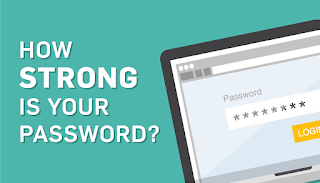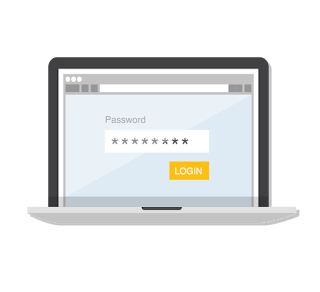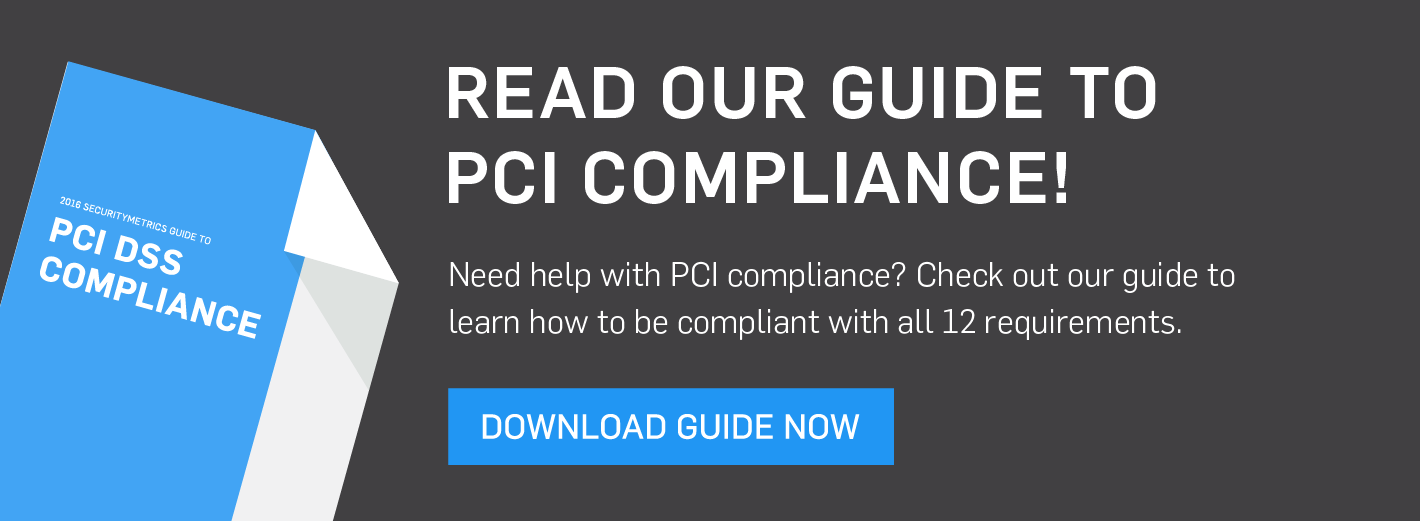Learn what your business is doing wrong with passwords.  By: George MateakiWith the recent release of PCI 3.2, one of the changes is the requirement that business must use multi-factor authentication within and out of the network. Multi-factor authentication includes at least two of the following:Something you know (password, code, etc.)Something you have (code sent to your phone)Something you are (fingerprint scan, etc.) Part of the authentication process includes passwords, but unfortunately passwords can bring their own set of problems.
By: George MateakiWith the recent release of PCI 3.2, one of the changes is the requirement that business must use multi-factor authentication within and out of the network. Multi-factor authentication includes at least two of the following:Something you know (password, code, etc.)Something you have (code sent to your phone)Something you are (fingerprint scan, etc.) Part of the authentication process includes passwords, but unfortunately passwords can bring their own set of problems. The problem with passwordsThe biggest problem with passwords is they can be broken fairly easily through brute-force and dictionary attacks. Programs like John the Ripper and L0phtCrack are used to crack even complex passwords.Human nature also makes passwords insecure. Employees tend to choose passwords they can remember easily, often making it easy for a data thief to crack through social engineering. Many employees also tend to write down passwords or even share them with others for more convenience.Finally, there’s the matter of storage. Many applications transmit passwords in plaintext, making it easy for hackers to find and use.Unfortunately, many businesses don’t realize just how easily cyber thieves can crack a password, especially if it’s a common one. As a result, they have poor practices when it comes to password security.Here are some things businesses are doing wrong with passwords.
The problem with passwordsThe biggest problem with passwords is they can be broken fairly easily through brute-force and dictionary attacks. Programs like John the Ripper and L0phtCrack are used to crack even complex passwords.Human nature also makes passwords insecure. Employees tend to choose passwords they can remember easily, often making it easy for a data thief to crack through social engineering. Many employees also tend to write down passwords or even share them with others for more convenience.Finally, there’s the matter of storage. Many applications transmit passwords in plaintext, making it easy for hackers to find and use.Unfortunately, many businesses don’t realize just how easily cyber thieves can crack a password, especially if it’s a common one. As a result, they have poor practices when it comes to password security.Here are some things businesses are doing wrong with passwords.![]() TweetDefault configuration: businesses will often keep the default passwords that were established when their routers/POS systems were set up. Most default passwords have been published on the internet, so that makes it fairly easy for hackers to break into your devices. Sharing credentials: sometimes employees will share accounts and credentials to save time. However, this makes it easy for social engineers to quickly gain access to sensitive data. Not updating passwords regularly: for many hackers, it’s only a matter of time before they crack a password, so businesses that have had the same passwords for their accounts since the day the company started are vulnerable. Choosing words like “password” or “admin”: these passwords are very common and are likely the first words hackers guess when trying to break into your remote access. SEE ALSO: Top Ten PCI Requirement Failures: Where is Your Business Struggling?Do we even need passwords anymore? It’s true that passwords alone will not secure your data very well, but it’s the baseline. The fact that many businesses aren’t even using basic password security shows how vulnerable their data may be.Eventually passwords may not be needed anymore as technology develops, but currently your devices and applications will still need unique, strong passwords.Password best practices So how do you make sure your passwords are secure? Here are some basic practices.Assign employees unique credentials/change default passwordsMake sure your employees aren’t using the same password or usernames. This will prevent social engineers from getting access to sensitive data simply by targeting one employee. Many companies will create a numeric user name that has absolutely no association with the actual name of the user. Changing the administrator account name to admin may meet the letter of the law but misses the intent. The administrator user name should be changed to something that does not indicate an administrator. This goes for any elevated access account used as the master/root access if the technology allows for this.You’ll also want to change all the default passwords on devices, otherwise you’re opening up your network to hackers. Follow for more data security articles like thisMake passwords long and complexThe longer your password, the better. Just like larger encryption keys are harder to break, longer passwords are more difficult to crack. The PCI DSS recommends businesses have passwords of at least eight characters, though I recommend at least 10-15 characters.You’ll also want to make them complex, using a mixture of numbers, symbols and letters. This seems like a no-brainer, but you’d be surprised how many people don’t follow this rule.Reset passwords oftenTrain your employees to reset passwords at regular intervals. For example, you could have them change passwords every 30, 60, or 90 days. Switching passwords often can help prevent the vulnerabilities of brute-force attacks. The less time hackers have on your password, the less likely they’ll crack it before you change it. The best approach is forcing users to change their passwords using technology per the current policy.Have limited login attempts:Set a number of times your employees can try to log into a system. After a number of unsuccessful logons, have the account lock out the one trying to get in. This will help prevent brute-force attacks and social engineers trying to guess passwords.SEE ALSO: 3 Data Security Best PracticesHow to create a strong password
TweetDefault configuration: businesses will often keep the default passwords that were established when their routers/POS systems were set up. Most default passwords have been published on the internet, so that makes it fairly easy for hackers to break into your devices. Sharing credentials: sometimes employees will share accounts and credentials to save time. However, this makes it easy for social engineers to quickly gain access to sensitive data. Not updating passwords regularly: for many hackers, it’s only a matter of time before they crack a password, so businesses that have had the same passwords for their accounts since the day the company started are vulnerable. Choosing words like “password” or “admin”: these passwords are very common and are likely the first words hackers guess when trying to break into your remote access. SEE ALSO: Top Ten PCI Requirement Failures: Where is Your Business Struggling?Do we even need passwords anymore? It’s true that passwords alone will not secure your data very well, but it’s the baseline. The fact that many businesses aren’t even using basic password security shows how vulnerable their data may be.Eventually passwords may not be needed anymore as technology develops, but currently your devices and applications will still need unique, strong passwords.Password best practices So how do you make sure your passwords are secure? Here are some basic practices.Assign employees unique credentials/change default passwordsMake sure your employees aren’t using the same password or usernames. This will prevent social engineers from getting access to sensitive data simply by targeting one employee. Many companies will create a numeric user name that has absolutely no association with the actual name of the user. Changing the administrator account name to admin may meet the letter of the law but misses the intent. The administrator user name should be changed to something that does not indicate an administrator. This goes for any elevated access account used as the master/root access if the technology allows for this.You’ll also want to change all the default passwords on devices, otherwise you’re opening up your network to hackers. Follow for more data security articles like thisMake passwords long and complexThe longer your password, the better. Just like larger encryption keys are harder to break, longer passwords are more difficult to crack. The PCI DSS recommends businesses have passwords of at least eight characters, though I recommend at least 10-15 characters.You’ll also want to make them complex, using a mixture of numbers, symbols and letters. This seems like a no-brainer, but you’d be surprised how many people don’t follow this rule.Reset passwords oftenTrain your employees to reset passwords at regular intervals. For example, you could have them change passwords every 30, 60, or 90 days. Switching passwords often can help prevent the vulnerabilities of brute-force attacks. The less time hackers have on your password, the less likely they’ll crack it before you change it. The best approach is forcing users to change their passwords using technology per the current policy.Have limited login attempts:Set a number of times your employees can try to log into a system. After a number of unsuccessful logons, have the account lock out the one trying to get in. This will help prevent brute-force attacks and social engineers trying to guess passwords.SEE ALSO: 3 Data Security Best PracticesHow to create a strong password Now days, using your favorite sport as a password doesn’t cut it anymore. Here’s a list of the top ten popular passwords for 2015:123456password12345678qwerty12345123456789football12341234567baseballSome additional passwords in the top 25 include, “dragon,” “welcome,” and “starwars.” None of these passwords are secure because they’re too easy to guess, being too common or relying on keyboard patterns. Hackers know these lists well and often use them as a first step to cracking your password. If any of your passwords are on this list, you’ll want to change them as soon as possible.Your best practice is to do a passphrase that’s unique to you. Take a phrase such as “I wear my sunglasses at night” and use the first letter of each word. Combine it with a number, such as a date, and you have a stronger password. Example: I wear my sunglasses at night= Iwmsg@n1980!You likely know these, but a few other basic guidelines for passwords include:Use a mixture of upper and lower-case lettersDon’t include name or other personal informationReplace some letters with numbersUse nonsense phrases, misspellings, or substitutionsDo not use repeating patterns between password changesDo not use the same passwords for work and personal accountsYou can’t really afford to have weak passwords. Ultimately a password isn’t going to completely secure your data. What you really need is to use a combination of multi-factor authentication, encryption, and other protocols to make sure your data is secure. But having a strong password is a good start.George Mateaki (CISSP, CISA, QSA, PA-QSA) is a Security Analyst at SecurityMetrics with an extensive background in Information Security and 20+ years in IT.
Now days, using your favorite sport as a password doesn’t cut it anymore. Here’s a list of the top ten popular passwords for 2015:123456password12345678qwerty12345123456789football12341234567baseballSome additional passwords in the top 25 include, “dragon,” “welcome,” and “starwars.” None of these passwords are secure because they’re too easy to guess, being too common or relying on keyboard patterns. Hackers know these lists well and often use them as a first step to cracking your password. If any of your passwords are on this list, you’ll want to change them as soon as possible.Your best practice is to do a passphrase that’s unique to you. Take a phrase such as “I wear my sunglasses at night” and use the first letter of each word. Combine it with a number, such as a date, and you have a stronger password. Example: I wear my sunglasses at night= Iwmsg@n1980!You likely know these, but a few other basic guidelines for passwords include:Use a mixture of upper and lower-case lettersDon’t include name or other personal informationReplace some letters with numbersUse nonsense phrases, misspellings, or substitutionsDo not use repeating patterns between password changesDo not use the same passwords for work and personal accountsYou can’t really afford to have weak passwords. Ultimately a password isn’t going to completely secure your data. What you really need is to use a combination of multi-factor authentication, encryption, and other protocols to make sure your data is secure. But having a strong password is a good start.George Mateaki (CISSP, CISA, QSA, PA-QSA) is a Security Analyst at SecurityMetrics with an extensive background in Information Security and 20+ years in IT. 